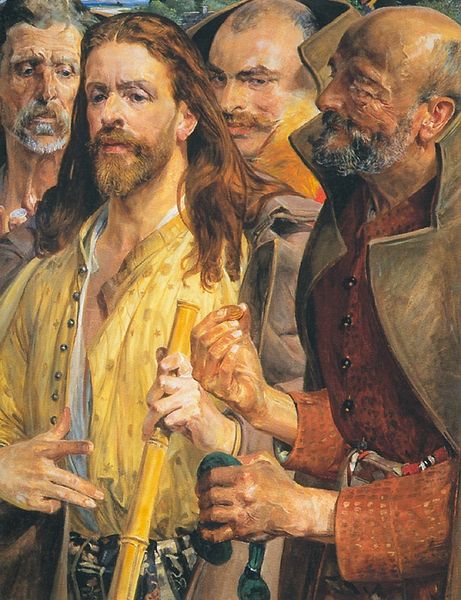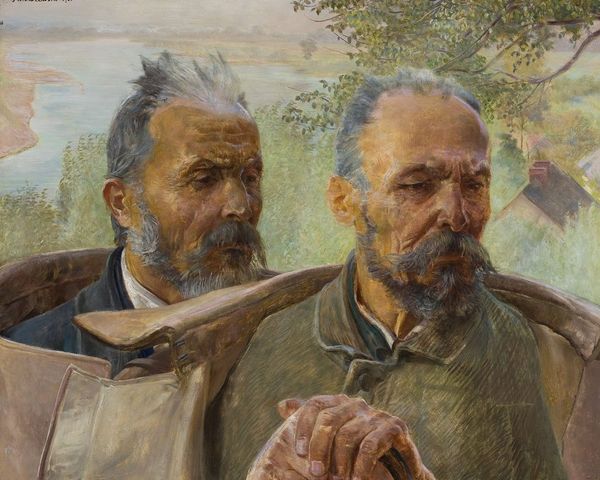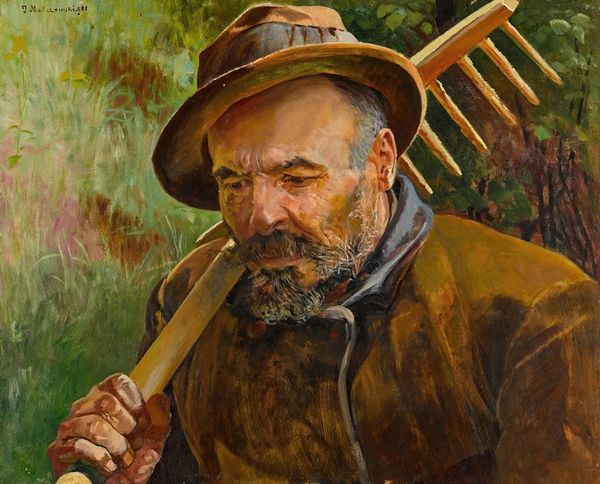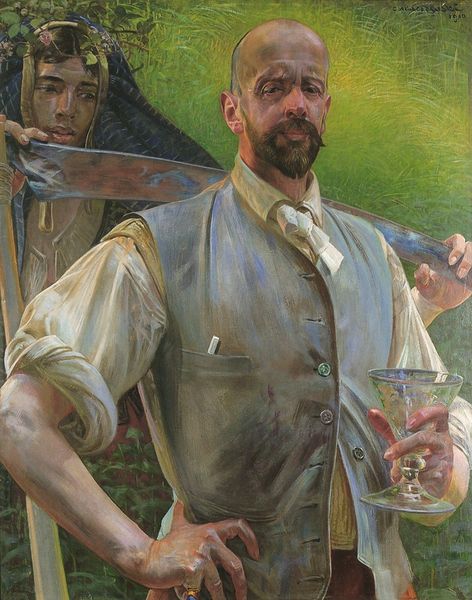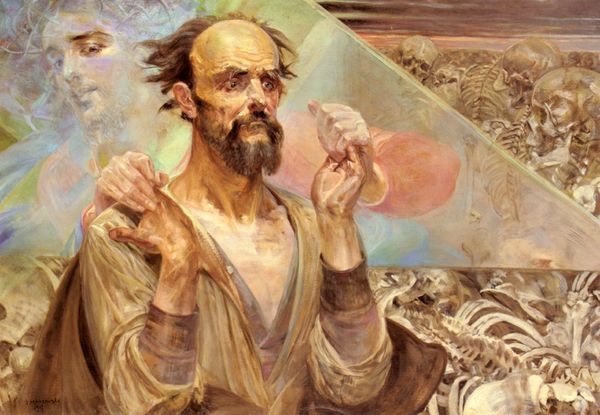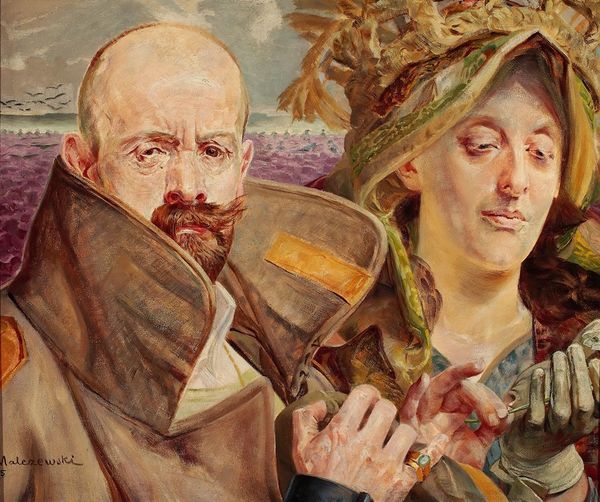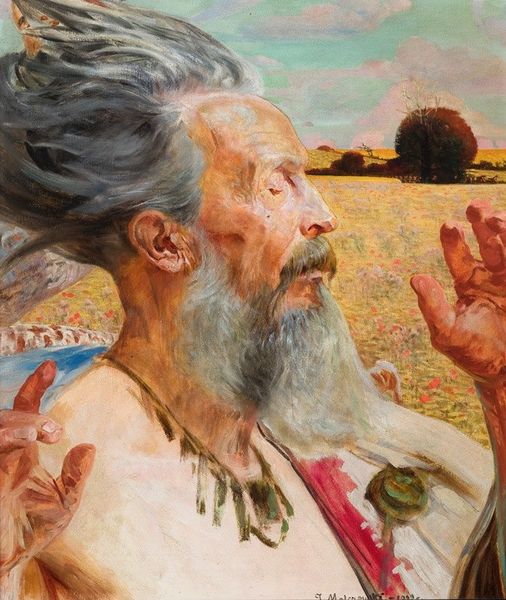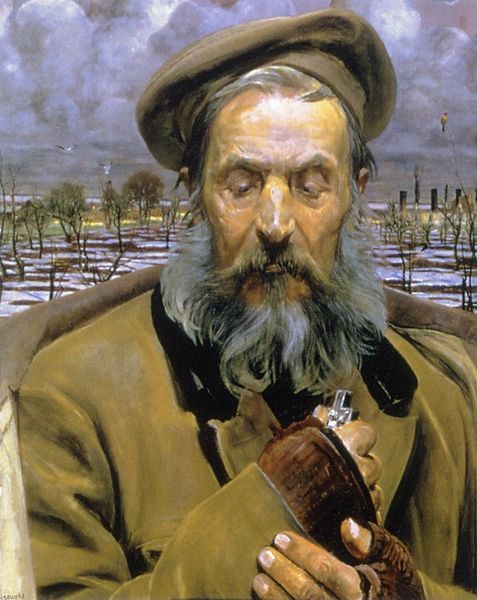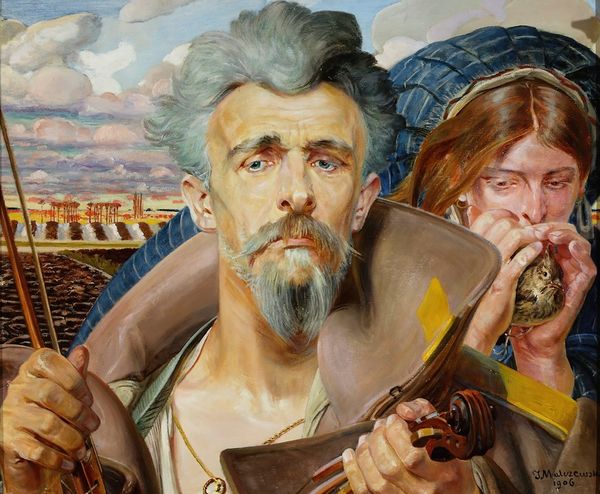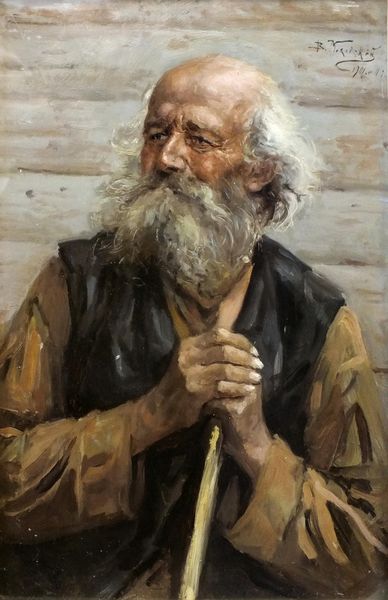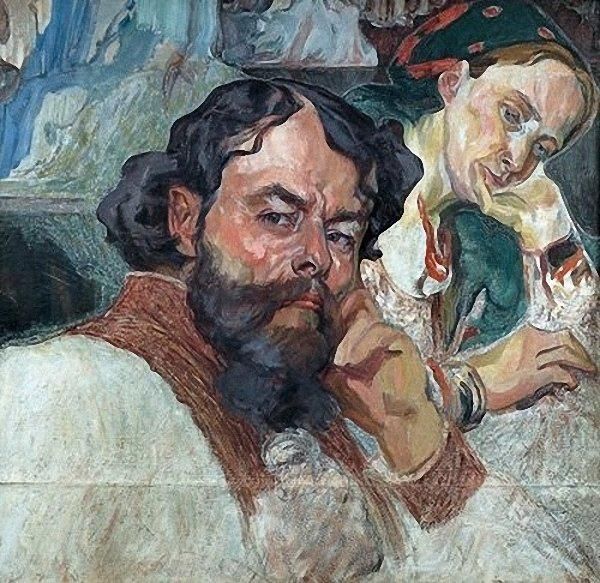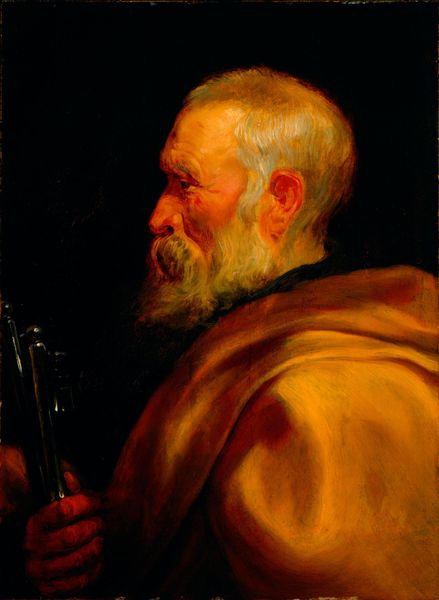
painting, oil-paint
#
portrait
#
figurative
#
narrative-art
#
painting
#
oil-paint
#
figuration
#
oil painting
#
symbolism
#
history-painting
#
academic-art
#
portrait art
Copyright: Public Domain: Artvee
Curator: Jacek Malczewski painted "Story of a Song – Portrait of Adam Asnyk" in 1899. I find myself drawn to how the artist depicts this noted Polish poet amongst figures of what appear to be satyrs. Editor: My first impression is one of melancholy. The pallid figures behind the poet, wreathed in what look like decaying foliage, exude a certain decay. They give me a visceral, if unsettling, feeling. Curator: Absolutely. Consider the positioning. Asnyk, in his somber coat, is sharply grounded in the real world. Behind him, the figures seem almost spectral, emerging from the mists of a past perhaps both glorious and troubled. It speaks to Poland's complex history and its national identity forged through poetry and art. There's a dialogue happening between the tangible present and an almost mythological past. Editor: Yes, and the satyrs themselves, these ancient symbols of revelry and music, carry layers of meaning. The instruments held by each satyr hint at creative inspiration but rendered as hollow or somehow stunted in potential. Is Malczewski suggesting the burdens and societal constraints imposed on creative genius? It’s as if Asnyk is both supported and haunted by tradition. Curator: Precisely! And Asnyk's own expression is key. He is not merely a passive subject. His face is etched with thought, perhaps a grappling with his role as a poet, a shaper of national consciousness during a period of intense political upheaval. This is not simply a portrait but a complex statement about the relationship between art, artist, and societal expectations. The gaze itself seems burdened, weighed down by historical awareness. He almost appears to be looking beyond us and reflecting on something just out of sight. Editor: It's fascinating how the artist uses classical symbolism not as simple decoration, but to frame a modern Polish experience. Malczewski successfully layers pagan motifs atop Asnyk's figure to add depth. The single yellow leaf near Asnyk further contributes to the painting's mournful character. It suggests endings and the ephemeral nature of existence. It really leaves one contemplative about the intersection of art and memory. Curator: Ultimately, I believe Malczewski captures the weight of legacy, the ongoing dialogue between a nation's past and the individual who strives to give it voice through his work. Editor: It’s an intricate and emotional experience. The figures, rich with historical association, prompt further contemplation of tradition and its influence on Polish culture.
Comments
No comments
Be the first to comment and join the conversation on the ultimate creative platform.
